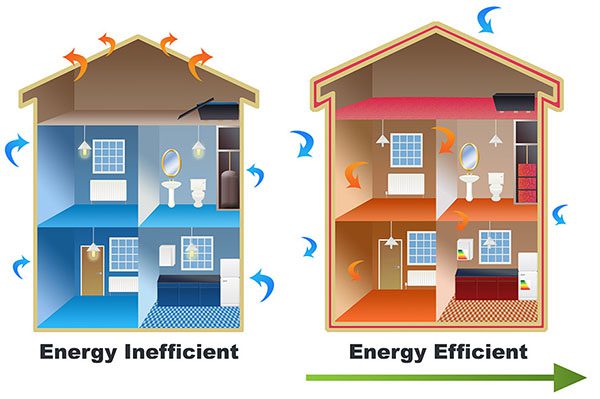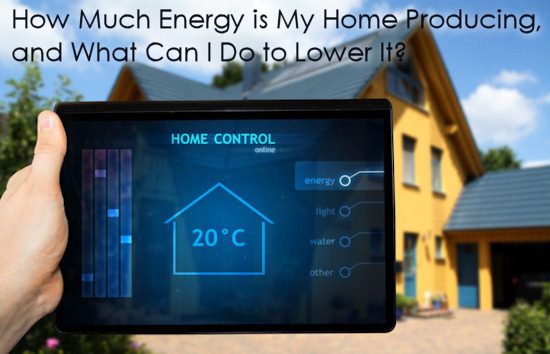Homeowner’s Guide to Saving Money on Heating and Cooling with DIY Tips
Hot summer days and cold winter nights can send your utility bills through the roof. The good news is that there are plenty of ways to reduce your utility bill. For example, you can install a programmable thermostat that will heat or cool your house only at certain times of day. Some more tried and tested tips to ensure saving money on heating and cooling are given below:

Around the House
1. Using dimmer switches and three-way light bulbs can help you reduce electricity consumption. You can also install fluorescent bulbs in your lamps and other fixtures. Fluorescents produce more light with less electricity and last longer too.
2. Keep blinds and drapes closed during summer months to prevent sunlight from heating up your house. During the winter, take advantage of the sun’s rays by opening blinds and shades.
3. Fireplaces are common sources of energy loss. Be sure the damper is in working order and that it’s closed when the fireplace isn’t in use. To insulate your chimney even more, install a chimney cap, which seals out pests and prevents heat loss.
4. Glass fireplace doors can also help prevent energy loss. Keep them closed unless you need access to the fireplace. You might also consider installing a blower to increase the efficiency of your fireplace. The blower pulls air through a tube that circulates around the burning logs. When the air is heated, the blower forces it back into the room.
5. Consider the cost of comfort. For each degree you set your thermostat above 70 degrees Fahrenheit, you can expect a 3 percent rise in energy costs.
6. Check for air-leaks around doors and windows to find where you may need weather stripping.
7. Use the right product for your particular application.
8. Consider using shrink-wrap to seal windows during winter.
9. A significant amount of energy is lost due to leakage of conditioned air from the home and unconditioned air into the home. Common leak areas include recessed lights; plumbing, kitchen and dryer vents; electrical outlets; and crawlspaces. Sealing these common leak areas can make the home easier for your mechanical equipment to efficiently condition.
Cooling Systems
10. Experts say a fan can save up to 40 percent on your summer cooling costs, and up to 10 percent during the winter heating season. In summer, fans cool the room by creating a “wind chill effect.” For example, if you had a ceiling fan in a room that was 85 degrees, the fan would make the room feel like 78 degrees. During colder weather, by using the ‘reverse’ setting the fan saves energy by circulating hot air that rises to the ceiling and blowing it back down into the room.
11. For warmer days, Lumens floor fans, as opposed to an air conditioning system, give you cool breeze while considerably cutting down the energy cost.
12. If your air conditioner is turned off accidentally or because of a power outage, switch it off for at least 6 minutes before restarting to prevent damage to the compressor.
13. Preseason, professional maintenance of HVAC equipment can prevent equipment failure and keep it working at peak efficiency. Preseason checkups include inspection and cleaning of all of the system’s parts. Be sure to schedule your maintenance in advance; contractors get busy quickly.
Heating Systems
14. Whether you use gas or electricity, statistics show that most home heating systems are only about 60 percent efficient. Systems that aren’t properly maintained may be less than 50 percent efficient. That’s why keeping your heating system tuned up is one of the most important things you can do to keep your heating bills under control.
15. In addition to the solar heating system, a home can be made more efficient by switching to compact flourescents, installing energy-efficient solar appliances like solar powered fans, garden fountains etc. and increasing the insulation.
DIY Insulation for Doors and Windows
Doors and windows are two of the most obvious areas of concern when it comes to home energy conservation. Once air leaks have been detected using either a professional or an informal home energy audit, doors and windows are typically among the first areas that need attention. A number of weatherstripping products are available to help stop energy loss from your home. You can also weatherstrip on your own using self-stick foam as described.
Materials:
Self-stick foam
Tape measure
Scissors
Steps:
- Measure sides and top of door frame.
- Transfer measurements to foam and cut strip to length.
- Remove the backing of the self-stick foam tape and apply foam to inside face of door jamb.


